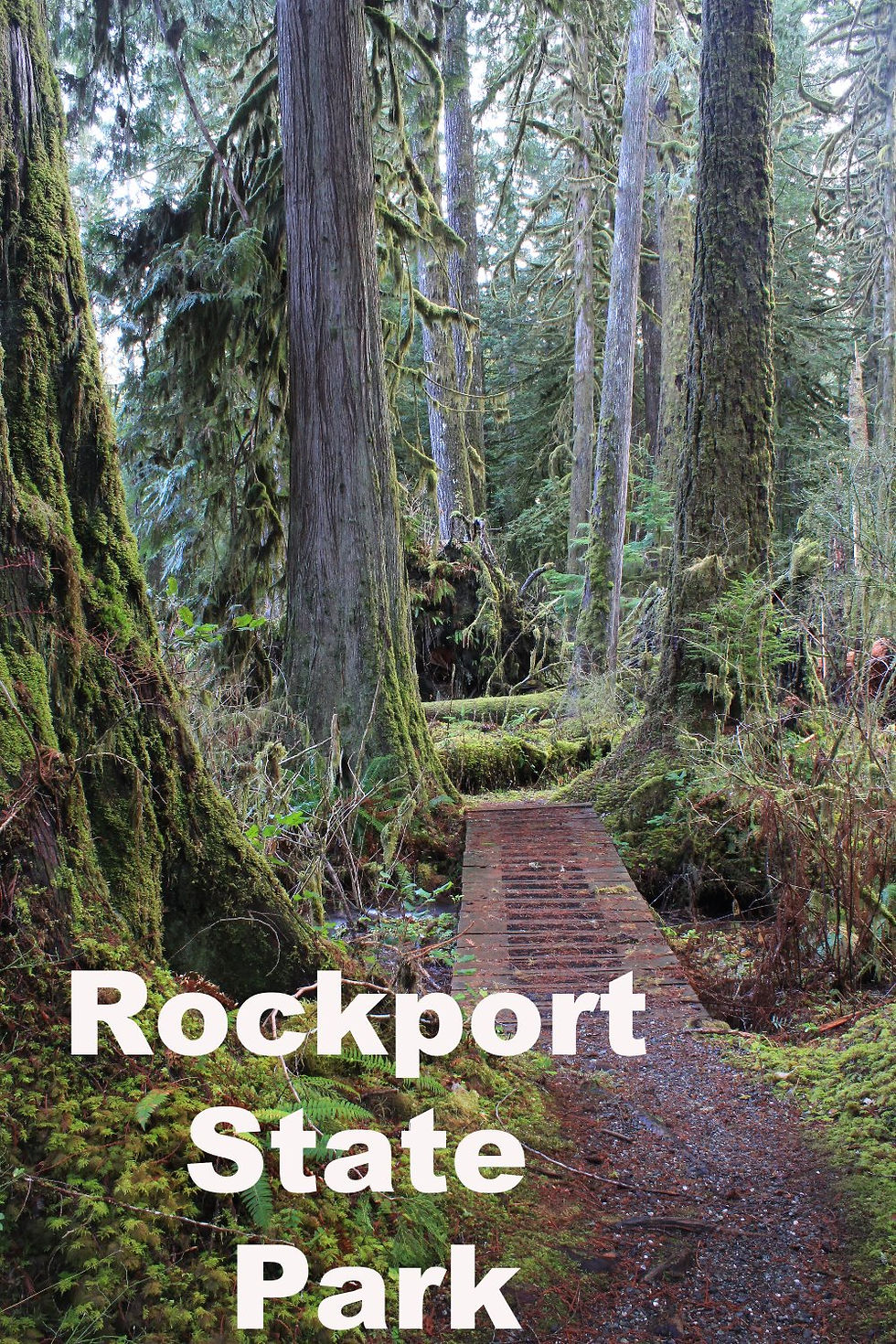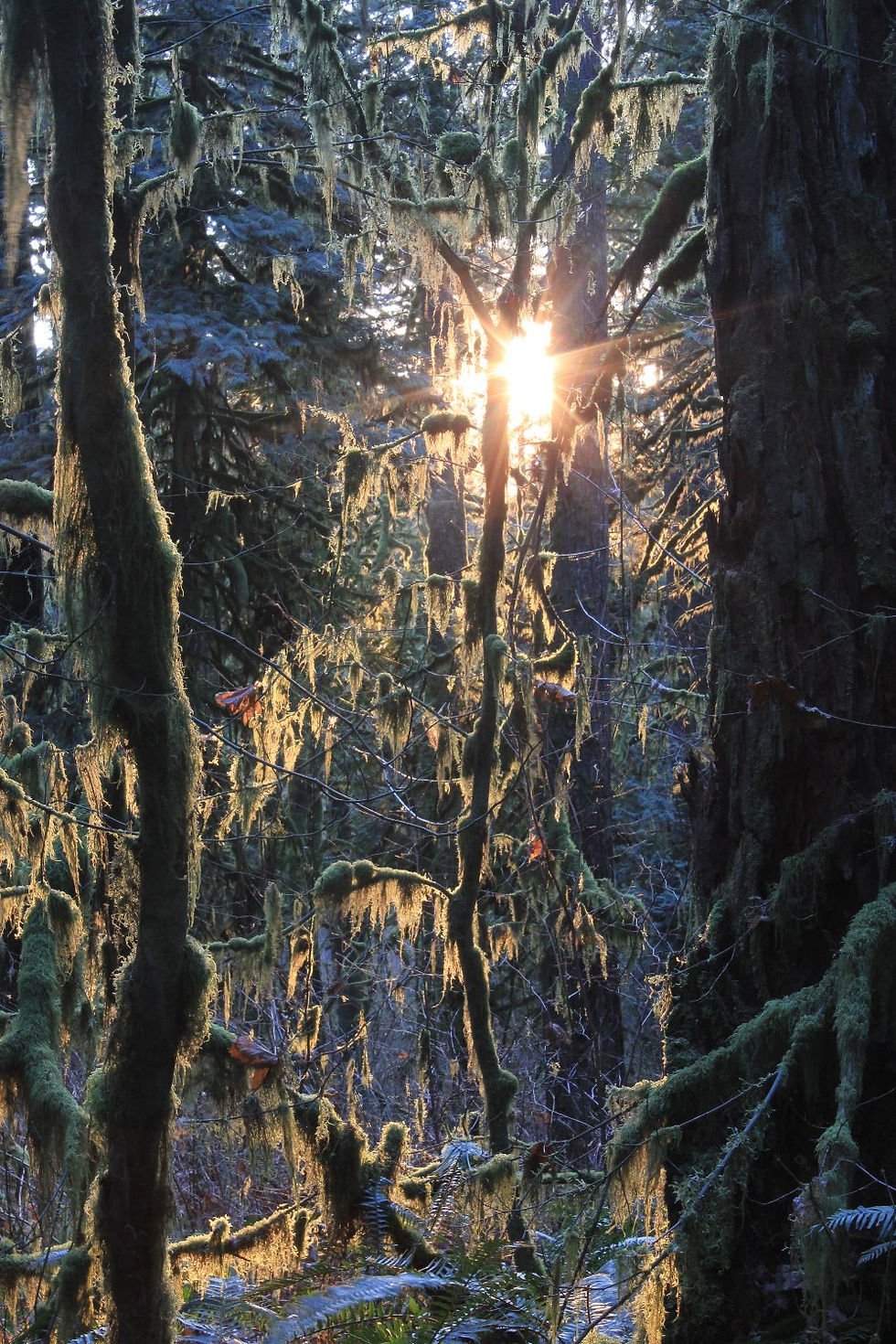It is not so much for its beauty that the forest makes a claim upon men’s hearts, as for that subtle something, that quality of air, that emanation from old trees, that so wonderfully changes and renews a weary spirit. – Robert Louis Stevenson

If Washington’s first state park was born in the desire to have pretty scenery as a backdrop to ever-quicker travel along a burgeoning highway system, a newer use of our parks encourages visitors to slow down. Way down.
Shinrin-yoku, a Japanese term that translates roughly to “forest bathing,” or "taking in the atmosphere of the forest" is a concept of meditative wellness practice that involves immersion into the ambiance of a forest.

I can think of few places better to practice the art than the ancient forest in Rockport State Park. The woods here are filled with Douglas fir, hemlock and western red cedar trees that have held their ground for 400 to 600 years.
The park’s Fern Creek Trail traces an arc around the former site of a campground closed because of the risk of giant limbs plunging a couple hundred feet down onto unsuspecting tenters. The trail, however, is the perfect spot for immersion in this old forest. Professional Shinrin-yoku guides issue “invitations,” suggestions for ways to facilitate a personal connection on deeper levels. One of my favorites: sit quietly next to a giant Douglas fir. Breathe. Listen. Soon you will hear the tiny sounds of the community of life that exists just in the furrows of the thick bark. Look. You will see insects, webs, delicate reproductive structures of moss plants. So much life, so much happening, so easily overlooked.
Forest Bathing’s adherents are quick to reference a growing body of peer-reviewed scientific literature that objectively measures the effectiveness of the practice. A 2007 study of 20-somethings students in Chiba, Japan found that test subjects who walked in a forest setting averaged a 13.4% reduction of salivary cortisol, a stress hormone. A 2011 study of 50-somethings men in Saitama, Japan showed that a forest walk led to a 1.4% decrease in blood pressure and a 5.8% decrease in heart rate.
Beyond the physical health benefits enumerated by the Japanese researchers, there is an intuitive sense that forest bathing must have major benefits toward personal happiness. In fact, research by Sonja Lyubomirsky, a psychologist at the University of California, Riverside, and the author of The How of Happiness has shown that the greatest determinants of happiness are a person's own thoughts, actions and attitudes. Savoring life's pleasures and valuing one's time to allow existing in the moment are the greatest predictors of happiness. Sounds like forest bathing to me!
Much of the Shinrin-yoku practice is familiar. As a naturalist I have encouraged park visitors to slow down and tune in to the intricacies of the forest. Planning activities for Junior Ranger programs, I consulted the classic Sharing Nature With Children by Joseph Cornell, which included the "Silent Sharing Walk," guiding students to walk silently and point out interesting features to each other.
Shinrin-yoku is well established in Japan, and the Association of Nature and Forest Therapy Guides and Programs has developed a training and certification program in North America and other parts of the world. An interactive map showing the locations of certified guides is available on their website.
Close to home, a local recreation event sponsor, Recreation Northwest, has developed the Parkscription program. Local health practitioners are enrolled to connect patients with positive outdoor experiences for healthier lifestyles and improved mental and physical health.
On a brisk December day, sunlight barely illuminates the forest on the Fern Creek Trail, but a couple of hours spent taking in the forest atmosphere is a ray of light shining on my soul.
Want to try? Here are some tips from the certified guides:
work with the forest as a partner, rather than a setting for your activity
don't over-think---this should be a sensory experience
you don't need to achieve anything
give yourself 2-4 hours of unscheduled time
it's about being here, not getting somewhere
think of the experience as playtime with a meditative feeling, not a workout
go unplugged
let each walk be its own experience
-David






